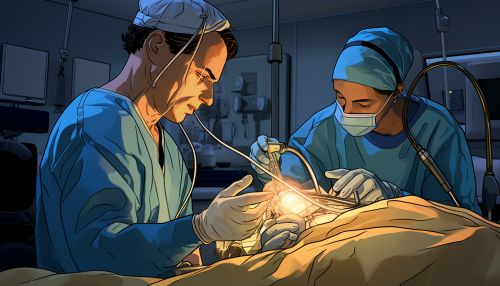Gastroscopy
Overview
A gastroenterologist performs a gastroscopy, also known as an upper endoscopy, to examine the upper part of the gastrointestinal (GI) tract. This includes the esophagus, stomach, and the first part of the small intestine, known as the duodenum. The procedure utilizes a flexible tube called an endoscope, which has a light and a camera at its tip.


Procedure
The gastroscopy procedure is typically performed on an outpatient basis. The patient is usually sedated or anesthetized for comfort. The endoscope is carefully inserted through the patient's mouth and down the esophagus, allowing the gastroenterologist to view the upper GI tract. The camera on the endoscope transmits images to a monitor, providing a detailed view of the area. If necessary, the gastroenterologist can use the endoscope to take biopsy samples for further examination.
Indications
Gastroscopy is often recommended when patients present with symptoms such as persistent upper abdominal pain, nausea, vomiting, or difficulty swallowing. It is also used to investigate issues such as gastrointestinal bleeding, inflammation, ulcers, or tumors. In addition, gastroscopy can be used to confirm the presence of conditions such as gastroesophageal reflux disease (GERD) or celiac disease.
Risks and Complications
While gastroscopy is generally safe, it carries a small risk of complications. These may include minor issues such as sore throat, bloating, or nausea. More serious complications, although rare, can include perforation of the stomach or esophagus, bleeding, or adverse reactions to the sedatives used. It is important for patients to discuss these risks with their healthcare provider before the procedure.
Preparation
Before a gastroscopy, patients are typically asked to fast for several hours to ensure an empty stomach. They may also need to adjust or stop certain medications. Patients should discuss their full medical history, including any allergies and all medications they are taking, with their healthcare provider.
After the Procedure
Following the procedure, patients are monitored until the effects of the sedatives have worn off. They may experience some bloating or cramping due to the air introduced into the stomach during the procedure. If a biopsy was taken, the results are usually available within a few days.
